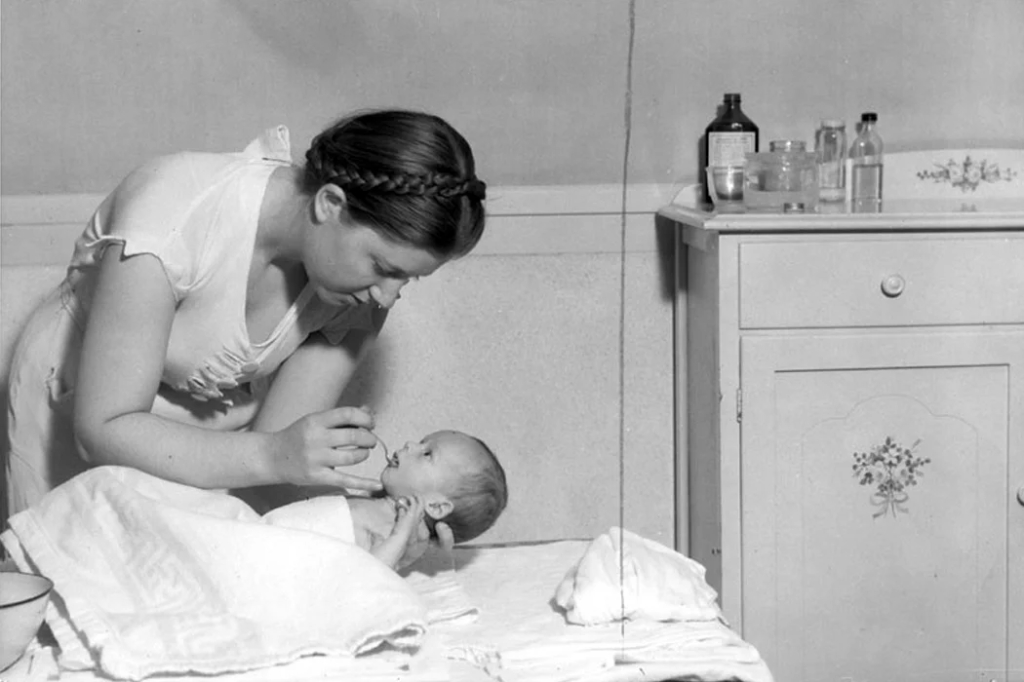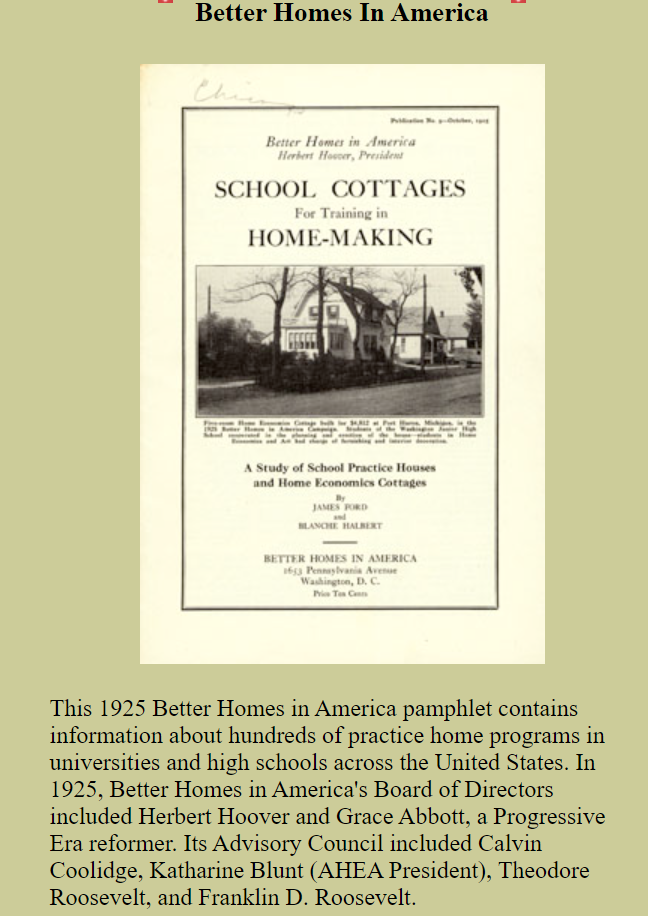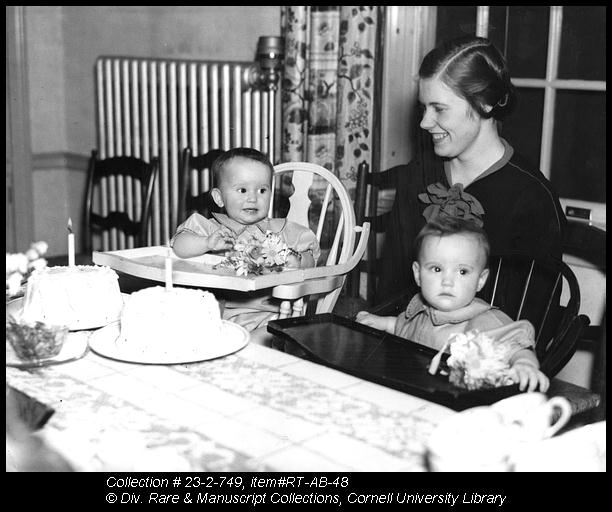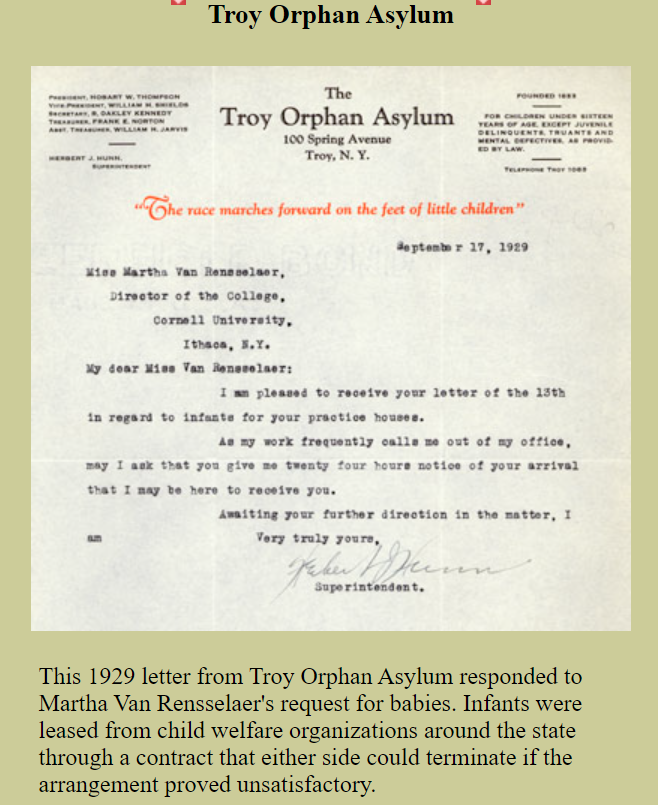
“If you studied home economics in the early twentieth century, you may have played with, burped, and changed a real, live baby—one borrowed from social services and put to work as a living workshop in how to raise a child. (In the text below, written by Erin Blakemore in JSTOR Daily, anthropologist Jessaca B. Leinaweaver delved into the forgotten practice of “borrowed” home ec babies, and what they reveal about gender and women’s struggle to have their work validated.”
Beginning in the 1930s, children from social services lived on the university campus. The babies lived in furnished “houses” and were cared for by household management students and teachers who bathed, fed, and changed them using the most up-to-date wisdom on childrearing. The setup was common at land grant colleges throughout the early twentieth century. University of Manitoba called them “practice babies.”
It was a pivotal time for home economics, which had recently gone from an obscure discipline to a respected one. The field was a way for women not just to show off their academic chops, but to elevate homemaking to a science. “Simultaneously with the rise of home economics as a discipline child rearing came to be seen as something that was the dominion of experts: what feminist scholars have titled ‘scientific motherhood’.”

At first, most scientific childrearing experts were male. But for about ten years, home economists and their practice babies did their best to become part of the conversation.
By practicing with “real, live babies,” home economists emphasized the need to receive careful training before raising a child. That, in turn, bolstered their insistence that home economics was a real field and that homemaking was worth studying.
The women of the University of Manitoba may have been trying to take over scientific territory traditionally occupied by men. But news accounts of the students’ work with babies emphasized their femininity. In articles about the school, the home economist and their students—all female—were portrayed as male babies’ doting servants.

The babies were thought to benefit. Children who lived at the home ec house were regarded as “more adoptable,” as if their stint at a scientific university had bolstered their class position and taken away the stigma of their roots.
In a time before modern attachment theory, many thought that these babies were better cared for by a revolving group of students and teachers. Today, that concept has been turned on its head. Baby borrowing may seem disconcerting now, but it’s a window into gendered practices of the past and alternative potentials for childrearing.”
From Cornell University’s newspaper, Cornell Daily Sun, Volume LX, Issue 29, 27 October 1939
” ‘Practice baby’ Jean Marie, and her seven part-time mothers are enjoying equally the experience of living together in the homemaking apartment of Martha van Rensselaer. Baby Jean, even on the first night, completely adopted herself to her new surroundings; instructing Miss Mary Lou Cockefair, and Miss Esther H. Clough ‘40, enthusiastically agreed that she was a beautiful baby, and that they were all ‘crazy about her.’
Three months old Jean, a vivid brunette, came to Cornell to teach seniors how to care for babies. Six students under the guidance of Miss Cockefair, live in the large apartment for five weeks, during which time they get actual experience in managing a house. The work is divided into six parts, including the job of ‘mother’ and ‘assistant mother’ and the students take turns at all of them.”

From Cornell University’s newspaper, the Cornell Daily Sun, Volume 64, Issue 44, 12 December 1946, Page 7
“A different student assumes the role of mother each week. Another student assists her and takes over the duties the following week so the baby is never left under inexperienced care. Alice Johnson, director of the apartment course, serves as supervisor, Dr. Helen Bull as the baby’s doctor and Miss Monsch directs their feeding.
After the arrival of Dicky Domecon, first practice baby, the half hundred infants have all gone from Cornell to permanent adoption homes. Although no follow-up record of their lives is made by the college, many foster parents bring the children back.
‘I sometimes think the girls’ dates like the babies as well as the girls,’ said Miss Johnson. ‘After one girl finished the course, her date kept visiting us weekly just to see that the baby was being well taken care of!’”
For Leinaweaver’s article, see here


